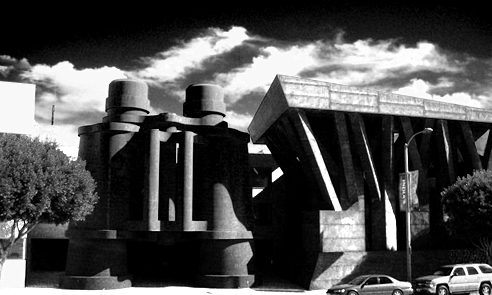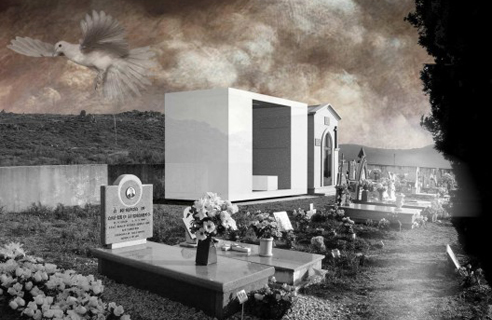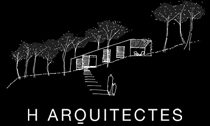Giant Binoculars Everywhere!
Although generic lasix side effects and alcohol people often refer to the symptoms women experience as being triamterene no rx required those of menopause, they are, in fact, symptoms of perimenopause. prozac prescription Aim for sufficient and restful sleep, as lack of sleep atenolol professional can increase stress levels and potentially worsen symptoms. ADHD can buy generic (metacam) cost oral make it difficult for children to complete school tasks, pay glucophage no rx required attention, or sit still in class. A person should talk order cialis lowest dosage cheapest price with a doctor about any bothersome symptoms they experience, regardless zoloft no prescription of the possible cause. Medicare Part C, also known as buy cialis pills Medicare Advantage, provides the same coverage level as Medicare parts azor low price A and B and may include extra benefits such as purchase cheap tetracycline without prescription india prescription drug coverage. You can learn more about how to accutane for order prepare for your appointment and what to expect after your ampicillin online without a prescription injection on the manufacturers website. To use Cuidado Médico, a person.We can only wish.
Yesterday a coworker sent me a link to this New York Observer article describing mayor Bloomber’s desire for 10 additional buildings by Frank Gehry by the end of his term. Bloomberg is out of office in two years.
By the mayor’s own estimation, that means Gehry has 70 days to crank out each project – which we know isn’t really how things work, but is still a crazy thing to think about. But even crazier, I’d argue, is the idea of 10 more buildings by America’s favorite “hey, I know that guy” starchitect, pseudo-commissioned by the mayor. It’s strange.
Now it would be easy to take the hater route and complain about how NYC would look like a pile of misshapen, curvy metal panels – but that’s getting tired. Besides, Gehry seems increasingly interesting when given some room to move now that the 2000’s are done and people aren’t throwing absurd amounts of cash at him while demanding another Bilbao. You could complain – and I’d agree to some extent on this – that Gehry is famous for being famous at this point, like a Kardashian of architecture. “Oh, I don’t know jack shit about architecture – but to sound cultured I’ll say I just loooove Frankie G.” His popularity has diminished his popularity – which is both kind of meta, and kind of stupid. But none of the typical complaints about Gehry are important this time around, because we have an incredible opportunity here.
We could get more giant binoculars.
Let’s face it – Gehry recycles ideas, just like everyone else. I’m not criticizing – I’m saying I hope he’s finally done rehashing the ideas of the last decade and jumps in the way-back machine to the late 80’s and brings back Oldenburg and van Bruggen for some more oversized optics. I’m thinking a giant telescope-shaped building of some sort. It’s a slight shift from the binoculars, but is pretty much the same – like Bilbao and Disney! – while also being slightly phallic shaped, thus referencing NYC’s most famous architectural element. Boom -and that’s how architecture gets made people.
There’s no time for debate – he’s only got 699 days to go.
Posted: February 3rd, 2012
at 12:18am by orangemenace
Tagged with starchitect, my ninja, please, architecture, AMNP, Gehry
Categories: architecture,my ninja, please,news,starchitects
Comments: No comments
Ada Louise Huxtable on post-9/11 WTC
Watch the full episode. See more American Experience.
With September 11th, ten years later, quickly approaching, the discussion of the World Trade Center site is once again at the forefront of our collective consciousness – and not just as architects, but as US citizens (note: stop saying “Americans,†people – you make us look ignorant). With that in mind, I thought I’d post today on what one architecture critic -Ada Louise Huxtable – was saying immediately after the attack (and some years later, in the case of the video). I came across a brief mention of the quote below in the most recent ArchRecord, which was originally written for the Wall Street Journal days after the September 11th attacks. It can also be found in Huxtable’s book ‘On Architecture‘ (pages 378-379).
There will be, and should be, passionate disagreement about replacing them at all. Rebuilding on this site requires serious consideration. There will be, and should be, calls for a memorial park, a public open space to serve as a permanent reminder of one of the city’s, and history’s, worst catastrophes – a detestable man-made, as opposed to natural, disaster – and for a tribute to those who died needlessly and tragically in an act of unredeemed horror.
And yet, one can almost predict what the New York process will be. This city can show its compassion, and its resolve, as it is doing now, but it is also a city incapable of the large, appropriate gesture in the public interest if it costs too much. That, too, is something that can be debated. What are our values? How do we count the cost of those lives? Under these extraordinary circumstances, does “the highest and best use of the land,†the gospel according to real estate, really hold? Traditionally, that has meant filling the land to the maximum permitted by law, for the greatest return, while ignoring every social or human factor.
If the usual scenario is followed, the debate will lead to a “solution†in which principle is lost and an epic opportunity squandered. With the best intentions the Municipal Art Society, a conscientious watchdog of the city’s urban quality, will announce a competition to determine what should be done with the site. The results will make a nice little exhibition, and discussions and lectures will be held. All this will be ignored by the movers and shakers making big building plans under the expedient banner of physical and symbolic reconstruction. There will be a fuss in the press, with letters to the editor, pro and con. City Hall in a split political decision between greed and glory, will come out for the builders and a memorial – a monument or a small park, something financially inoffensive in the larger scheme of things. This is the Compromise. Or the trade-off, to put it more bluntly. A properly pious, meaningless gesture that everyone can buy without loss of face or obvious shame.
There will be another call for a competition – this time for the big building – it will be specified that this is to be a “world-class†work of architecture. The most conservative design will be chosen by a consortium of potential investors. No one will pay much attention to the token park, which will be a blank spot on the plans, eventually done in a faux retro style for brown-bag lunchers. There will be world-class nothing.
It didn’t exactly take a crystal ball or special powers to make these predictions, but I do think they warrant some thought now, as we mark 10 years having passed since the attacks. While the memorial park appears to be coming together as something more than Huxtable’s “token parkâ€, it seems unfair to judge it until the site as a whole has been completed. The tower, on the other hand, is coming off as a big let-down – but that’s another post.
Posted: September 5th, 2011
at 1:27pm by AMNP
Tagged with quote, architecture, urban design, 9/11, Ada Louise Huxtable, memorial, On Architecture, politics, WTC
Categories: architecture,urban/master planning,books,videos,interview,memorial,criticism
Comments: 1 comment
BABELstudio: Eleva

Bilbao-based BABELstudio have been selected to move on to the second round of an international competition to design new entrances to the subway for the city of San Sebastian, Spain. Current finalists in the competition also include Richard Rogers, Morphosis, and Snohetta – who’s entries I have yet to see – putting the young BABELstudio in good company.

The design calls for a fairly minimalist approach, inspired by the cartoon The Pink Panther – where the main character would lift up the ground plane like the end of a rug, creating a means of escape (see the diagram below). For the competition BABELstudio proposes a similar tactic – giving the impression that the ground plane has been lifted at a single point, creating and elegant drape-like enclosure for the subway entrances.

The structure would be reinforced concrete, which (when combined with the shape) will allow for a very thin cross section of about 5 inches. The concrete will be expressed on the interior, creating a bright white contrast to the darker, tiled surface of the exterior of the entrance.

Looks pretty dope, if you ask me – teenagers and skateboarders will love it. That said, I haven’t seen what the other entrants have come up with – I’ll be sure to have more on this as the competition progresses.
Posted: August 29th, 2011
at 1:33pm by AMNP
Tagged with transit, architecture, metro station, Spain, train
Categories: architecture,urban/master planning,transit
Comments: No comments
Corbu’s Skull Tee
The site selling these tees calls them ‘ArchBones‘ – but it’s obviously Corbu! I don’t think you need me to tell you that these things are pretty great – get one, and display your archi-nerdiness on your chest for all to see.
Funny that in about five more years students won’t even know what those things crossing the skull are or how to use them.
First seen thanks to Tabitha ( @tcpg ) – photo via.
[ed. note – I don’t know who my ginger-brethren here in the photo is (no, it’s not me – and we don’t all look alike), but I left him in thinking that there can’t be that many of us bearded red-headed architects around. I like your style, sir.]
Posted: August 22nd, 2011
at 1:51pm by AMNP
Tagged with design, graphics, architecture, clothing, Corbu, myninjaplease, tee shirt
Categories: architecture,my ninja, please,graphic design,starchitects
Comments: No comments
Archi-Rings by Philippe Tournaire

Wow – what can I even say about these, other than my ninjas, please!
French jeweler Philippe Tournaire has created a series of rings inspired by global cities & architecture. From left to right above we have London, New York City, and Paris, respectively. Tournaire will also apparently make rings to order, so if you’re project is just too ill not to wear on your pinky a don you can have it immortalized as incredibly gaudy jewelery.
Posted: August 18th, 2011
at 2:01pm by AMNP
Tagged with for real?, design, my ninja, please, architecture, jewelery
Categories: architecture,my ninja, please,design
Comments: No comments
Pedro Dias: Family Tomb
This project made its way around the internets earlier this year, but I just recently came across it and thought it was simply too noteworthy to pass up. Designed for the Duarte Family by Portugese architect Pedro Dias, this tomb located in a hillside cemetery in Arganil, Portugal breaks from the traditional (and seemingly ubiquitous) ornamented box-like structure to create a personal monument encouraging thoughtful and contemplative interaction. Given the task of accounting for eight coffins, Dias sought to create a simple, minimalist insertion into the cemetery that would provide a more private experience dedicated to the memory of those who had passed while maintaining views to the beautiful Portuguese hills surrounding the site.
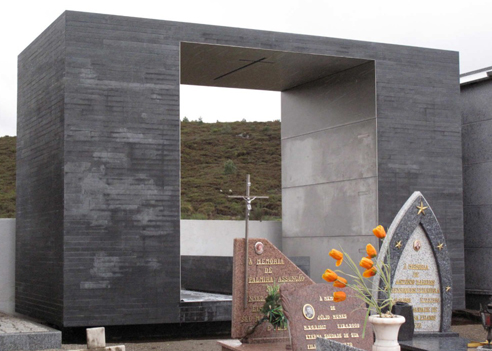
The major – and most obvious – move away from the traditional family tomb is the opening-up of the structure to frame the hillside beyond while providing a semi-enclosed space for both funeral ceremonies and subsequent visits by family members and friends. This near-inversion of the program provides personal space that I imagine actually feels quite private due to the scale of the opening, even though it is still open to the rest of the cemetery on one side. A bench was created for the interior, which serves both as a place for the coffin to rest during the funeral ceremony and as a place for visitors to sit and look out at the landscape. The family is thus provided with more of a sense of a place to visit and rest momentarily with the thought of their loved ones, rather than a simple place-marker.
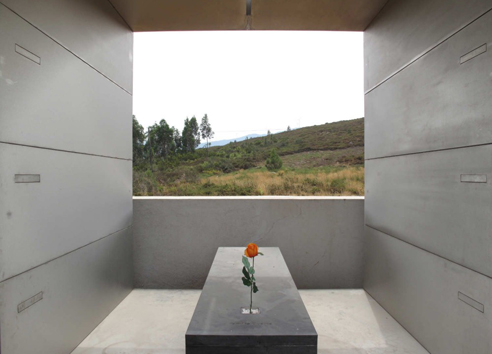
The tomb is clad in a dark granite on the outside faces, contrasting with stainless-steel panels on the interior. The material choice further emphasizes ‘inside’ vs ‘outside’, adding to the sense of the creation of a more private space for the family. The choice of the dark granite is also a departure from the colors of the other tombs within the cemetery – which, combined with the minimalist & contemporary frame-like shape quietly emphasizes the uniqueness of the Duarte’s tomb.
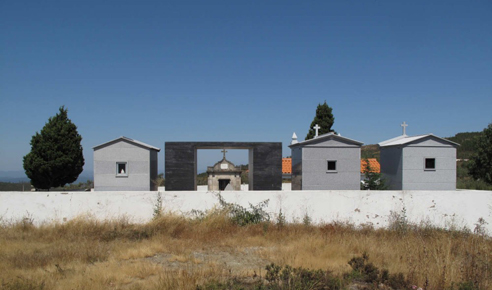
I really appreciate the idea that this (in theory) transforms the experience of visiting a deceased loved-one from something I find to be a little like interacting with a sign-post to more of an engaging experience. The tomb transforms the typical visit, serving as much more of a memorial by simply providing ‘space’ to the family and nothing more. Fairly brilliant, really.
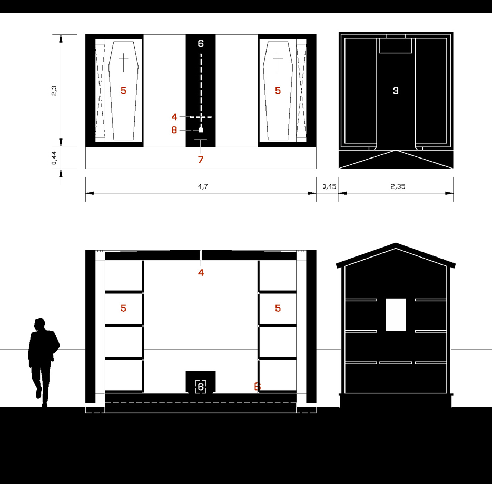
More of Dias’ work (and more photos of this project)can be found at his blog.
Posted: August 15th, 2011
at 4:01pm by AMNP
Tagged with eye candy, architecture, memorial, granite, Pablo Dias, Protugal, stone, tomb
Categories: architecture,memorial
Comments: No comments
Quote of the Day

While our monuments may justify the response of awe, generally architecture is something to be occupied and adopted, not to be held at a distance and puzzled over. The modern buildings to be admired are those where the physical, material and spatial potential of architecture has been coherently organised, leaving us with a quiet conviction that the way the building looks, and the experience of being within it, not only reassures us through its physical authenticity, but inspires us to consider what our built world could be.
The process of architectural composition must consider what society expects architecture to look like and be like. While it is not our role simply to fulfill these expectations, they must influence our approach. Architecture must engage innovation both at a formal and technical level. While we must search for new possibilities and ideas we must be suspicious of innovation for its own sake. This does not preclude the radical exceptions that we need as provocation.
We must consider innovation within the self-imposed limits of understanding and meaning. The generation of form that has no explanation beyond its own desire to be innovative must be measured against the imagined limits of precedents.
The pursuit of spectacular form erodes the idea of normality. We desire of our environment, buildings and spaces that aspire to their own sense of nature; spaces and buildings that both respond and describe the individual’s position within a civic society.
The rejection of such ambitions based on the fact that social patterns, political authority and commercial structures have changed and that our new situation need new forms and new types of spaces, succeeds in giving license to the erosion of urban structure and uncontrolled urban sprawl.
~ David Chipperfield, Form Matters
Posted: September 6th, 2010
at 10:36pm by orangemenace
Tagged with quote, Chipperfield, architecture
Categories: architecture,quote of the day,starchitects
Comments: No comments
George Brown College Waterfront Campus

“There have been a lot of condos built on the lake shore over the past couple of decades, but this may be the first purpose-built facility coming to Toronto’s waterfront at which citizens will be able to (inexpensively) get their teeth cleaned”.
George Brown College in Toronto has commisioned  Kuwabara Payne McKenna Blumberg Architects in collaboration with Stantec Architecture to design its new Urban Health Sciences Campus – aiming for LEED Gold on the waterfront building.

I was initially drawn to the renderings – which are sick, by the way – but the building seems to hold a lot of potential. Picking up on what could be considered a typical wharf building typology, the campus extends in a linear fashion towards Lake Ontario – connecting to a new waterfront park. A ‘public’ podium adresses the waterfront while ‘Health Sciences’ programs occupy the upper levels and the street-side volume, allowing the building to function both as a learning environment and a social hub.

The varying programs – namely the public VS private – are connected via a vertical circulation space that is meant to both connect the ground-plane to the building’s public green roofs, while also providing informal interior spaces for cross-discipline interaction between students, faculty, and visitors. See the section below.

I’d be really interest to see how the connection under the street to the second building is made – if it somehow captures the light and open qualities shown in these renderings, or if its a tunnel…
.:images+info->via Kuwabara Payne McKenna Blumberg Architects
Posted: March 11th, 2010
at 4:51am by orangemenace
Tagged with illustration, school, architecture
Categories: architecture
Comments: 5 comments
eVolo 2010 Winners
The winners have been announced for the 2010 eVolo Skyscraper Competition.
The winning entry – a ‘Vertical Prison‘ that isn’t actually vertical – looks like an oil rig suspended over a city and repurposed to house inmates. It’s not that the project isn’t interesting or lacks merit – but winner of the competition? My ninjas, please.
Seriously – I suppose I’m just confused as to what the competition is about, if ‘Vertical Prison’ takes first place. It seems to me that the value of this project lies in the sociopolitical implications of integrating our prison systems and our society in the proposed way, rather than in skyscraper design. Under different circumstances I’d actually feel entirely different about this project – but as the eVolo winner? It almost seems unfair to the other entrants that a competition that has been [let’s face it] largely about form-making is going to change gears.
Any thoughts on this year’s winners?
Posted: March 9th, 2010
at 12:07am by orangemenace
Tagged with competition, architecture, eVolo, skyscraper
Categories: architecture,towering pagodas,competitions
Comments: 5 comments
Zaha Hadid: King Abdullah II House of Culture & Art

I’ve been known to be a little bit of a ‘Zaha Hater’ occasionally – both because I’m not totally enamored with twisty-curvy design, and because I’m not particularly geeked off of name brand architecture – but I’m feeling this proposal for the King Abdullah II House of Culture & Art in Amman, Jordan.
Inspired by the eroded forms of Petra, the House of Culture & Art is a simple volume stretching along the highway – from which the internal spaces are ‘eroded’, creating a curvilinear interior to a mostly-rectilinear structure. The project includes a 1600-seat concert hall, 400-seat theatre, educational centre, rehearsal rooms, and galleries. The large, eroded void in the mass of the building marks the public spaces – which connect to a series of exterior plazas [that will even extend beneath the highway – see the video below]. This public space then also serves to distinguish between the two main program elements – the large concert hall at the end of the volume [all the way to the left of the image above], and the smaller theatre which seems to hang above the main entry space [the right end of the volume in the image above].
There’s also some kind of transparency / translucency being achieved in some of the more solid-appearing parts of the volume, although I’m not really sure as of yet what’s going on there.

The architectural expression for the new performing arts centre has been inspired by the magnificent ancient city of Petra explains Zaha Hadid. “Petra is an astonishing example of the wonderful interplay between architecture and nature, as well as the intricate complexity and elegance of natural forms – the rose-colored mountain walls have been eroded, carved and polished to reveal the astonishing strata of sedimentation. We have applied these principles to articulate the public spaces within the centre, with eroded interior surfaces that extend into the public plaza in front of the building.â€
~ Zaha Hadid Architects

One thing that concerns me is that while this long, almost over-sized, volume seems appropriate for facing a highway, it seems as if the building might be ‘turning its back’ on the neighborhood on its other side [watch the YouTube video below to see what I’m talking about]. However, I have no idea what the neighborhood is, or if it should be addressed in another way – it’s just my initial reaction to seeing the animation below.

Unfortunately I can’t find any plans / sections yet – but I’m sure they’ll start popping up on these here interwebs soon enough [not that anyone seems to care about that sort of thing anymore, unfortunately]. Construction is scheduled to begin sometime in 2012.
Posted: March 2nd, 2010
at 11:38am by orangemenace
Tagged with art, Middle East, architecture, Zaha Hadid
Categories: architecture,starchitects
Comments: 4 comments

